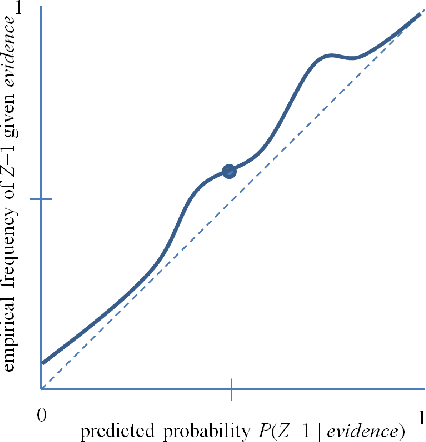Binary Classifier Calibration: Non-parametric approach
Paper and Code
Jan 14, 2014



Accurate calibration of probabilistic predictive models learned is critical for many practical prediction and decision-making tasks. There are two main categories of methods for building calibrated classifiers. One approach is to develop methods for learning probabilistic models that are well-calibrated, ab initio. The other approach is to use some post-processing methods for transforming the output of a classifier to be well calibrated, as for example histogram binning, Platt scaling, and isotonic regression. One advantage of the post-processing approach is that it can be applied to any existing probabilistic classification model that was constructed using any machine-learning method. In this paper, we first introduce two measures for evaluating how well a classifier is calibrated. We prove three theorems showing that using a simple histogram binning post-processing method, it is possible to make a classifier be well calibrated while retaining its discrimination capability. Also, by casting the histogram binning method as a density-based non-parametric binary classifier, we can extend it using two simple non-parametric density estimation methods. We demonstrate the performance of the proposed calibration methods on synthetic and real datasets. Experimental results show that the proposed methods either outperform or are comparable to existing calibration methods.
 Add to Chrome
Add to Chrome Add to Firefox
Add to Firefox Add to Edge
Add to Edge